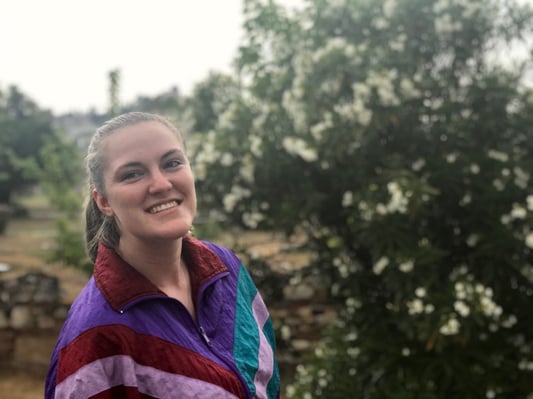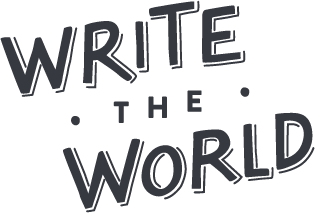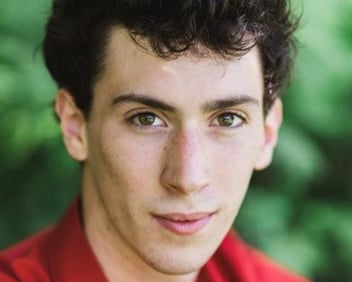Five years ago, Anna Gibbs was a WtW young writer focused on poetry; flash-forward to today, where she’s not only a WtW team member but also a science writer, who recently published a piece on light-emitting plants for Earth Island Journal. Our Alumni Ambassador Shanti Mathias caught up with Anna to learn more about her journey from young writer to science journalist. Read on for a glimpse into her writing process and to learn more about the field of narrative journalism!

Shanti: What drew you to journalism?
Anna: I thought for a long time that “journalism” meant short, reporting-style pieces about events. That’s why I didn’t consider journalism as a potential career path until my last year in college, when I took a class on narrative science journalism with the incredible author Michael Pollan. I learned that narrative/literary journalism combines the dimensions of fiction and poetry (such as characters, plot, conflict, imagery, symbolism) with factual reporting, while remaining absolutely faithful to the truth.
It felt like I had discovered a whole new world. There’s something about telling stories. We become endeared to characters; we get hooked on the storyline and have to keep reading to find out what happens next. There’s this idea that stories are the stuff of childhood and make-believe, when in fact everything contains a story. Intriguing characters and wild situations exist in the real world. Why reduce that to a news report? Why not tell the story?
Shanti: How do you go about deciding what to write—pitching, researching, finding interview subjects?
Anna: I find that the hardest part is choosing the subject! There’s so much to write about, and so much that’s already been written about. One way to find stories is to look for them everywhere—while running errands or talking to a friend. If I hear something interesting and think “huh, I don’t know much about that,” I’ll do some research on the topic to see what has already been written on it and if anything is missing. For the times when I don’t want to wait for inspiration to strike, I look through press releases (EurekAlert! is a great site) to find interesting research. That was how I found the glowing plant story at MIT.
Once I’ve selected a topic, I usually jump right into interviewing. One thing I’ve learned about interviewing is to not feel daunted about my own lack of knowledge. The scientists are the experts on the subject, and the writer is the expert at communicating that science. I always do baseline research so I don’t ask questions that I could’ve answered with a quick Google search, but I’m also not embarrassed to ask obvious questions. The challenge of science writing is to explain really difficult concepts, and I won’t be able to do that if I can’t understand the concept.
When choosing who to interview, I think about the different voices that I want to have in the piece. It’s good to have an expert who can comment on each central aspect of the piece. For the glowing plant story, I knew I needed to interview some of the MIT scientists working on the project. I wanted to have the cultural angle as well, so I researched Avatar and discovered that they had had a plant consultant. For the section on the potential risks of nanotechnology, it took a long time to find the right expert; I had to find organizations that studied the types of questions I had. Some scientists never got back to me. I’ve found that scientists are usually really excited to talk about their work, but some are just insanely busy.
The interviews give me a ton of information, but I also do my own research to better understand the intricacies of my subject. And I always research past published articles about my subject so I can make sure that my angle is fresh and unique.
Shanti: Why is science communication important to you?
Anna: I mentioned earlier that stories are everywhere. Well, so is science. Science is integral to our everyday life; it is medicine, architecture, transportation, agriculture, and the Earth itself. Understanding it is really important, but there’s usually a barrier between scientists and the general public. The writer is the one who creates the gate that allows people to have access to information about things that affect them everyday. Michael Pollan told my class that “writing is a form of civic action.” I never knew what I wanted to be growing up, but I knew I wanted to do something with writing and helping people. Science communication achieves both.
Not to mention—science is so cool! I’m particularly interested in environmental journalism, so I often write about fascinating plants and animals. I want other people to learn the things I’m learning, and I want them to think they’re cool too. Like, sea slugs that look like tiny sheep and run on solar power?! Massive 500-year-old sharks with parasites attached to their eyes?! A tiny fern that helped cool the global climate?! And the people who are studying these things are pretty interesting too. I like the idea of helping people feel more wonder at the world around them, because sometimes those wondrous things are hard to spot from our everyday lives.
Shanti: What’s one thing you’ve learned writing a piece that you couldn’t include in the final version?
Anna: It’s so hard to cut out fun facts that aren’t relevant enough to the piece’s premise. I wrote a long-form (5,000 word) article about a fern called Azolla, which helped cool the global climate. It’s the funkiest little plant. It’s being studied in outer space as a potential food source for future habitation on the moon. There’s a Swedish cookbook about it. It’s used in nuclear power plants in Iran to filter radioactive waste out of the water. I had to cut all these facts for my final story because I decided to focus on the climate angle.
Shanti: How has Write the World informed your journey as a writer?
Anna: I started on Write the World as a writer (writing poetry, my first love!) and then transitioned into working behind the scenes in a few different positions. Write the World continues to show me the importance of having others review my work. It can be scary to share unfinished or unpolished work, especially when you’ve become attached to it. But your first readers are your guinea pigs. They can tell you if you have achieved what you hoped with your story, and if not, give suggestions for how to get there. Write the World showed me the importance of sharing my writing with my peers during the editing process, and I continue to do so. I’ve learned to get a thick skin about edits to sections that I loved. Everything contributes to making the best final piece.





